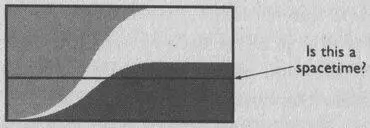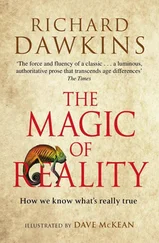David Deutch - The Fabric of Reality
Здесь есть возможность читать онлайн «David Deutch - The Fabric of Reality» весь текст электронной книги совершенно бесплатно (целиком полную версию без сокращений). В некоторых случаях можно слушать аудио, скачать через торрент в формате fb2 и присутствует краткое содержание. ISBN: , Жанр: Физика, Философия, на английском языке. Описание произведения, (предисловие) а так же отзывы посетителей доступны на портале библиотеки ЛибКат.
- Название:The Fabric of Reality
- Автор:
- Жанр:
- Год:неизвестен
- ISBN:0-7139-9061-9
- Рейтинг книги:4 / 5. Голосов: 2
-
Избранное:Добавить в избранное
- Отзывы:
-
Ваша оценка:
- 80
- 1
- 2
- 3
- 4
- 5
The Fabric of Reality: краткое содержание, описание и аннотация
Предлагаем к чтению аннотацию, описание, краткое содержание или предисловие (зависит от того, что написал сам автор книги «The Fabric of Reality»). Если вы не нашли необходимую информацию о книге — напишите в комментариях, мы постараемся отыскать её.
The Fabric of Reality — читать онлайн бесплатно полную книгу (весь текст) целиком
Ниже представлен текст книги, разбитый по страницам. Система сохранения места последней прочитанной страницы, позволяет с удобством читать онлайн бесплатно книгу «The Fabric of Reality», без необходимости каждый раз заново искать на чём Вы остановились. Поставьте закладку, и сможете в любой момент перейти на страницу, на которой закончили чтение.
Интервал:
Закладка:

FIGURE 11.8 A sequence of snapshots with increasing clock readings is not necessarily a spacetime.
In spacetime physics, any snapshot is determined by any other. As I have said, in the multiverse that is in general not so. Typically, the state of one group of identical snapshots (such as the ones in which the coin is ‘spinning’) determines the state of an equal number of differing snapshots (such as the ‘heads’ and ‘tails’ ones). Because of the time-reversibility property of the laws of quantum physics, the overall, multi-valued state of the latter group also determines the state of the former. However, in some regions of the multiverse, and in some places in space, the snapshots of some physical objects do fall, for a period, into chains, each of whose members determines all the others to a good approximation. Successive snapshots of the solar system would be the standard example. In such regions, classical physical laws are a good approximation to the quantum ones. In those regions and places, the multiverse does indeed look as in Figure 11.6, a collection of spacetimes, and at that level of approximation the quantum concept of time reduces to the classical one. One can distinguish approximately between ‘different times’ and ‘different universes’, and time is approximately a sequence of moments. But that approximation always breaks down if one examines the snapshots in more detail, or looks far forwards or backwards in time, or far afield in the multiverse.
All experimental results currently available to us are compatible with the approximation that time is a sequence of moments. We do not expect that approximation to break down in any foreseeable terrestrial experiment, but theory tells us that it must break down badly in certain types of physical process. The first is the beginning of the universe, the Big Bang. According to classical physics, time began at a moment when space was infinitely dense and occupied only a single point, and before that there were no moments. According to quantum physics (as best we can tell), the snapshots very near the Big Bang are not in any particular order. The sequential property of time does not begin at the Big Bang, but at some later time. In the nature of things, it does not make sense to ask how much later. But we can say that the earliest moments which are, to a good approximation, sequential occur roughly when classical physics would extrapolate that the Big Bang had happened 10 –43seconds (the Planck time ) earlier.
A second and similar sort of breakdown of the sequence of time is thought to occur in the interiors of black holes, and at the final recollapse of the universe (the ‘Big Crunch’), if there is one. In both cases matter is compressed to infinite density according to classical physics, just as at the Big Bang, and the resulting gravitational forces tear the fabric of spacetime apart.
By the way, if you have ever wondered what happened before the Big Bang, or what will happen after the Big Crunch, you can stop wondering now. Why is it hard to accept that there are no moments before the Big Bang or after the Big Crunch, so that nothing happens, or exists, there? Because it is hard to imagine time coming to a halt, or starting up. But then, time does not have to come to a halt or start up, for it does not move at all. The multiverse does not ‘come into existence’ or ‘cease to exist’; those terms presuppose the flow of time. It is only imagining the flow of time that makes us wonder what happened ‘before’ or ‘after’ the whole of reality.
Thirdly, it is thought that on a sub-microscopic scale quantum effects again warp and tear the fabric of spacetime, and that closed loops of time — in effect, tiny time machines — exist on that scale. As we shall see in the next chapter, this sort of breakdown of the sequence of time is also physically possible on a large scale, and it is an open question whether it occurs near such objects as rotating black holes.
Thus, although we cannot yet detect any of these effects, our best theories already tell us that spacetime physics is never an exact description of reality. However good an approximation it is, time in reality must be fundamentally different from the linear sequence which common sense supposes. Nevertheless, everything in the multiverse is determined just as rigidly as in classical spacetime. Remove one snapshot, and the remaining ones determine it exactly. Remove most snapshots, and the few remaining ones may still determine everything that was removed, just as they do in spacetime. The difference is only that, unlike spacetime, the multiverse does not consist of the mutually determining layers I have called super-snapshots, which could serve as ‘moments’ of the multiverse. It is a complex, multi-dimensional jigsaw puzzle.
In this jigsaw-puzzle multiverse, which neither consists of a sequence of moments nor permits a flow of time, the common-sense concept of cause and effect makes perfect sense. The problem that we found with causation in spacetime was that it is a property of variants of the causes and effects, as well as of the causes and effects themselves. Since those variants existed only in our imagination, and not in spacetime, we ran up against the physical meaning-lessness of drawing substantive conclusions from the imagined properties of non-existent (‘counter-factual’) physical processes. But in the multiverse variants do exist, in different proportions, and they obey definite, deterministic laws. Given these laws, it is an objective fact which events make a difference to the occurrence of which other events. Suppose that there is a group of snapshots, not necessarily identical, but all sharing the property X. Suppose that, given the existence of this group, the laws of physics determine that there exists another group of snapshots with property Y. One of the conditions for X to be a cause of Y has then been met. The other condition has to do with variants. Consider the variants of the first group that do not have the property X. If, from the existence of these, the existence of some of the Y snapshots is still determined, then X was not a cause of Y: for Y would have happened even without X. But if, from the group of non-X variants, only the existence of non-Y variants is determined, then X was a cause of Y.
There is nothing in this definition of cause and effect that logically requires causes to precede their effects, and it could be that in very exotic situations, such as very close to the Big Bang or inside black holes, they do not. In everyday experience, however, causes always precede their effects, and this is because — at least in our vicinity in the multiverse — the number of distinct types of snapshot tends to increase rapidly with time, and hardly ever decreases. This property is related to the second law of thermodynamics, which states that ordered energy, such as chemical or gravitational potential energy, may be converted entirely into disordered energy, i.e. heat, but never vice versa. Heat is microscopically random motion. In multiverse terms, this means many microscopically different states of motion in different universes. For example, in successive snapshots of the coin at ordinary magnifications, it seems that the setting-down process converts a group of identical ‘predictably heads’ snapshots into a group of identical ‘heads’ snapshots. But during that process the energy of the coin’s motion is converted into heat, so at magnifications large enough to see individual molecules the latter group of snapshots are not identical at all. They all agree that the coin is in the ‘heads’ position, but they show its molecules, and those of the surrounding air and of the surface on which it lands, in many different configurations. Admittedly, the initial ‘predictably heads’ snapshots are not microscopically identical either, because some heat is present there too, but the production of heat in the process means that these snapshots are very much less diverse than the later ones. So each homogeneous group of ‘predictably heads’ snapshots determines the existence of — and therefore causes — vast numbers of microscopically different ‘heads’ snapshots. But no single ‘heads’ snapshot by itself determines the existence of any ‘predictably heads’ snapshots, and so is not a cause of them.
Читать дальшеИнтервал:
Закладка:
Похожие книги на «The Fabric of Reality»
Представляем Вашему вниманию похожие книги на «The Fabric of Reality» списком для выбора. Мы отобрали схожую по названию и смыслу литературу в надежде предоставить читателям больше вариантов отыскать новые, интересные, ещё непрочитанные произведения.
Обсуждение, отзывы о книге «The Fabric of Reality» и просто собственные мнения читателей. Оставьте ваши комментарии, напишите, что Вы думаете о произведении, его смысле или главных героях. Укажите что конкретно понравилось, а что нет, и почему Вы так считаете.












